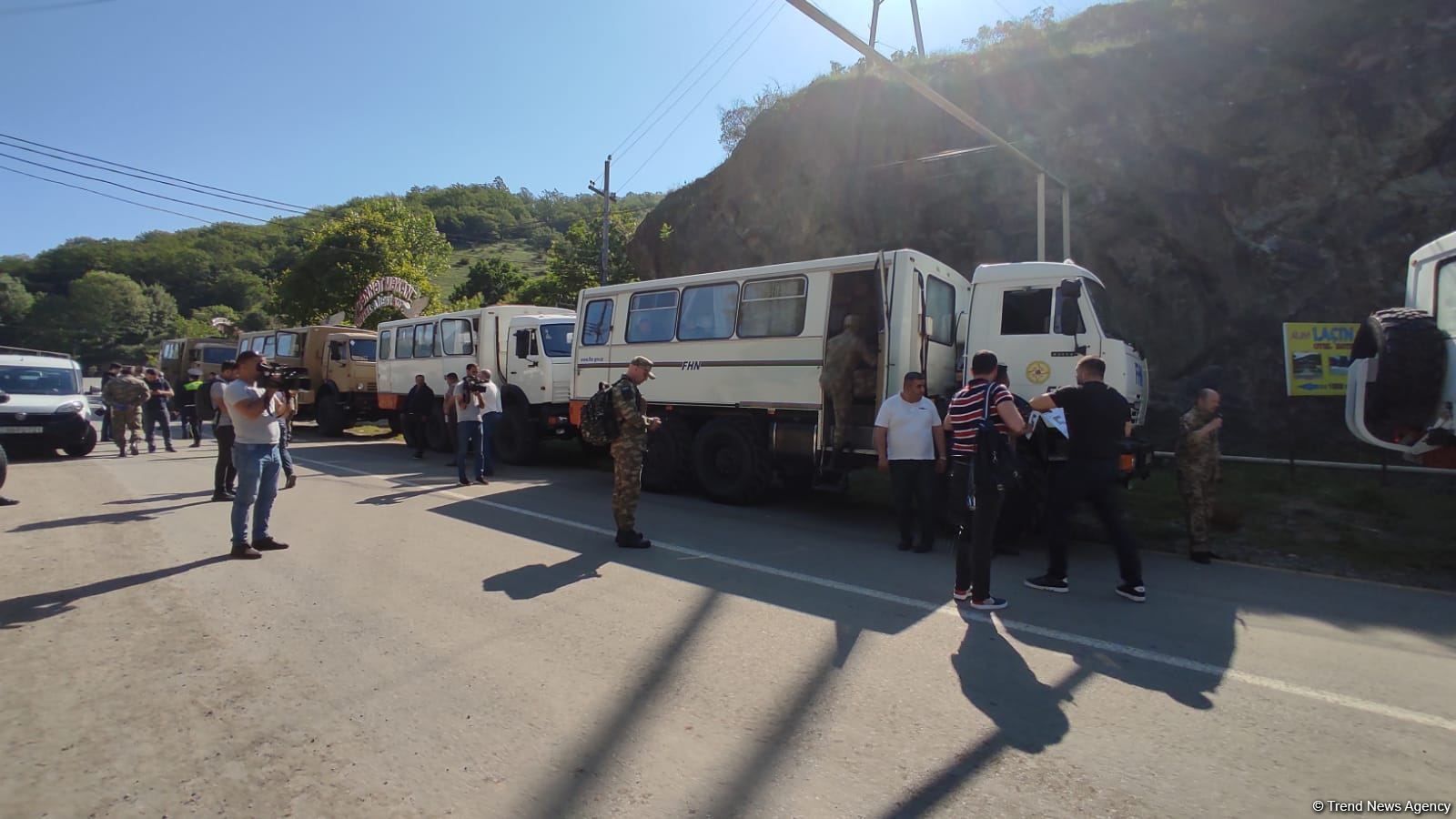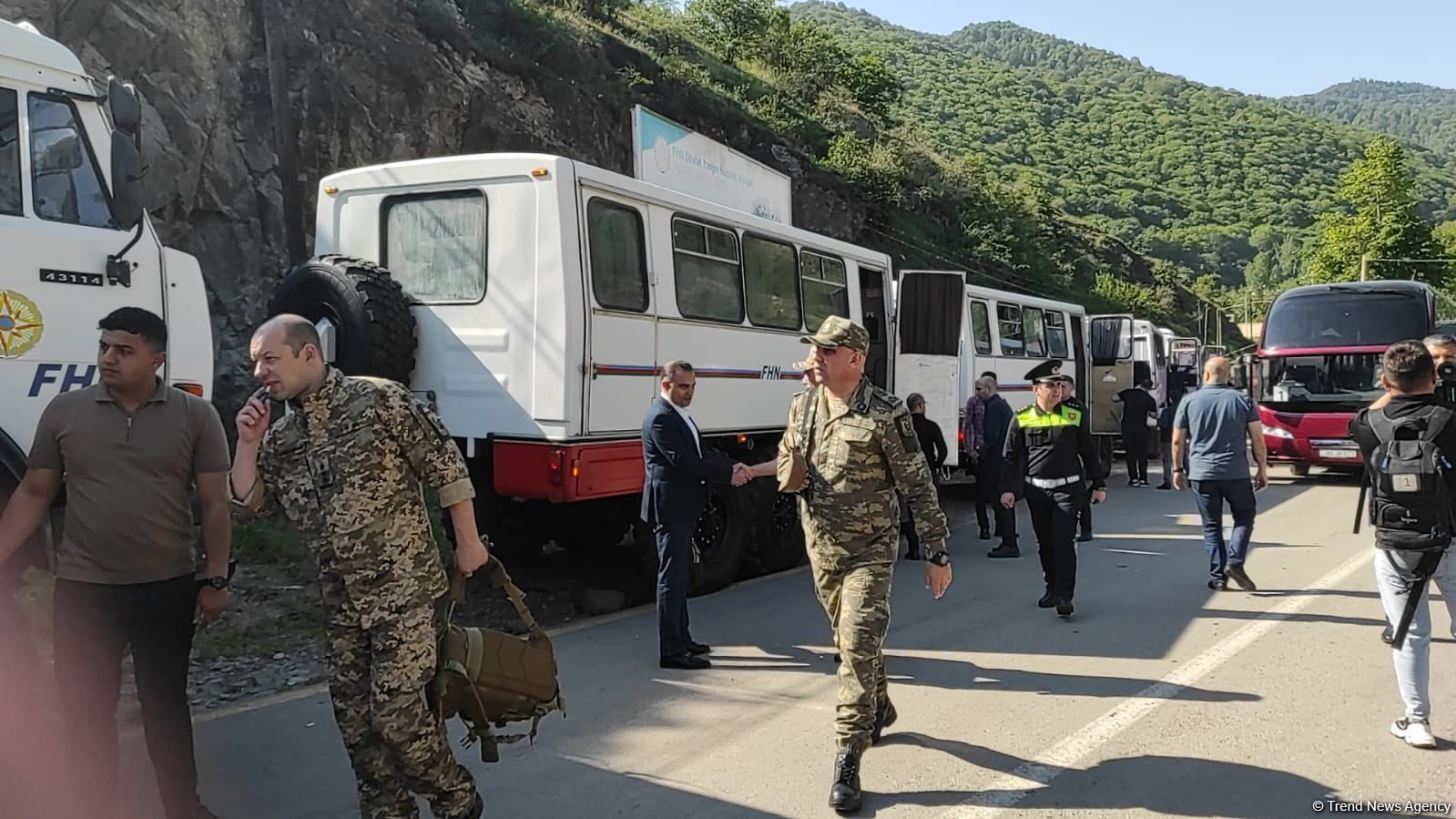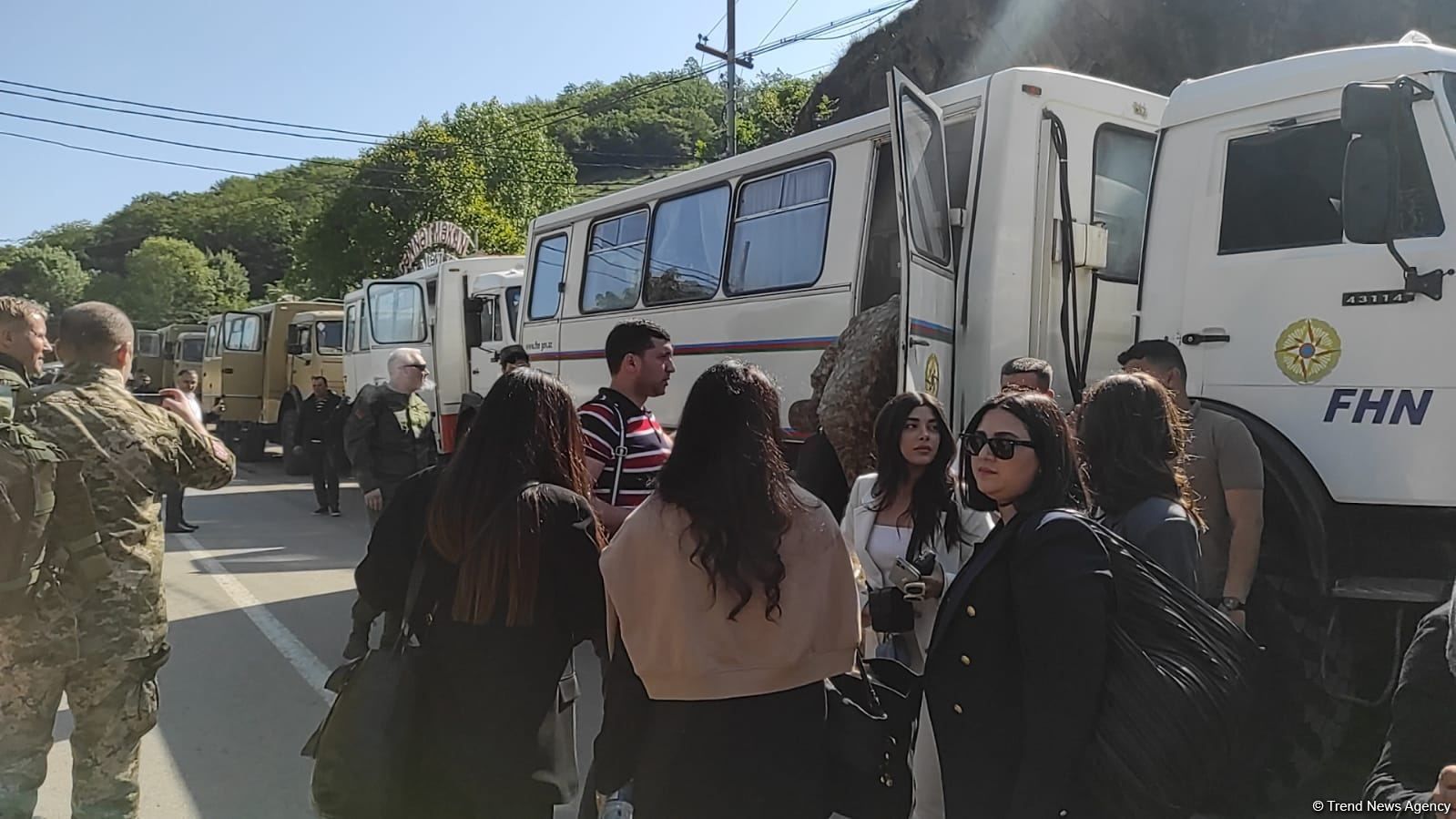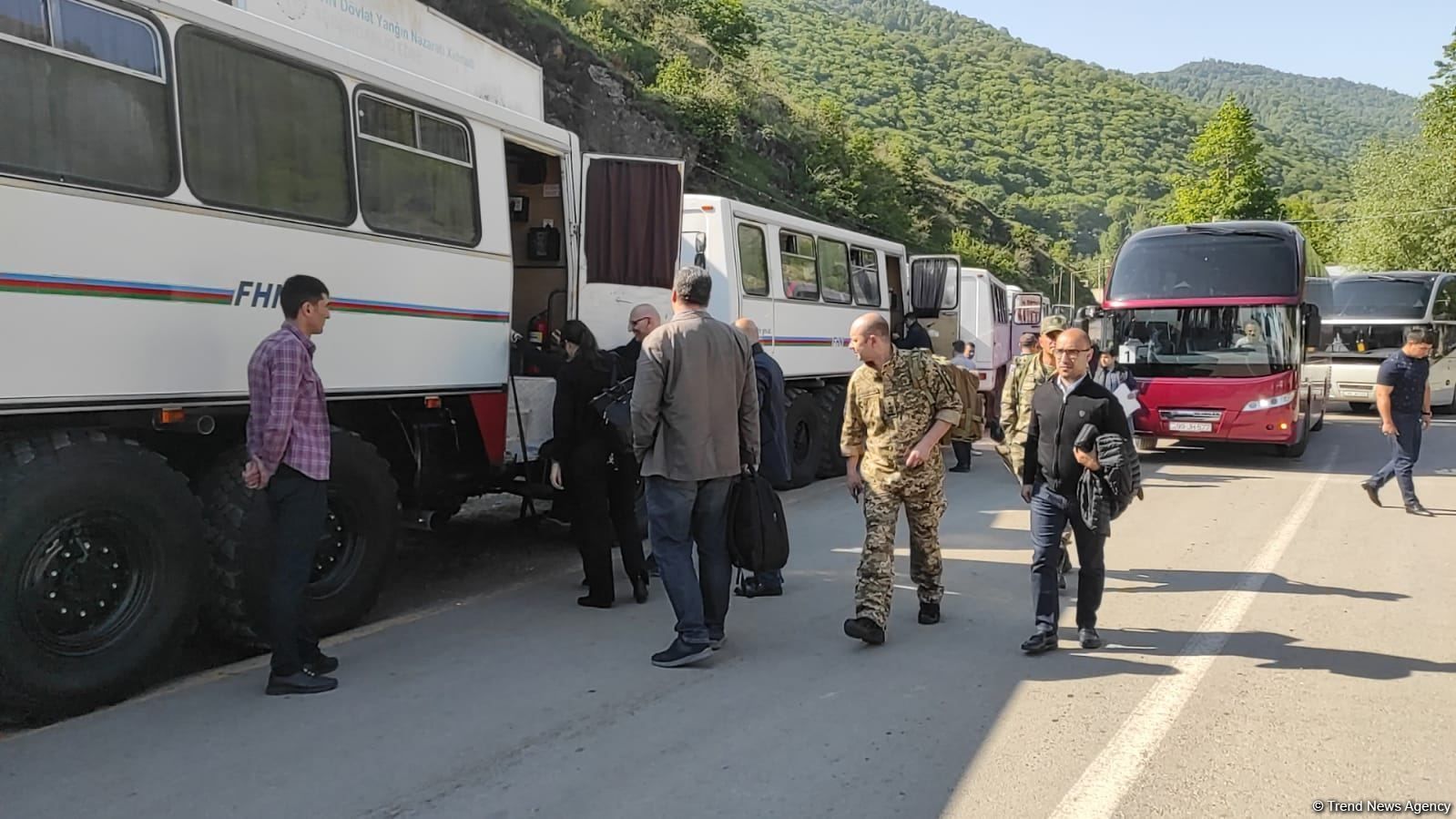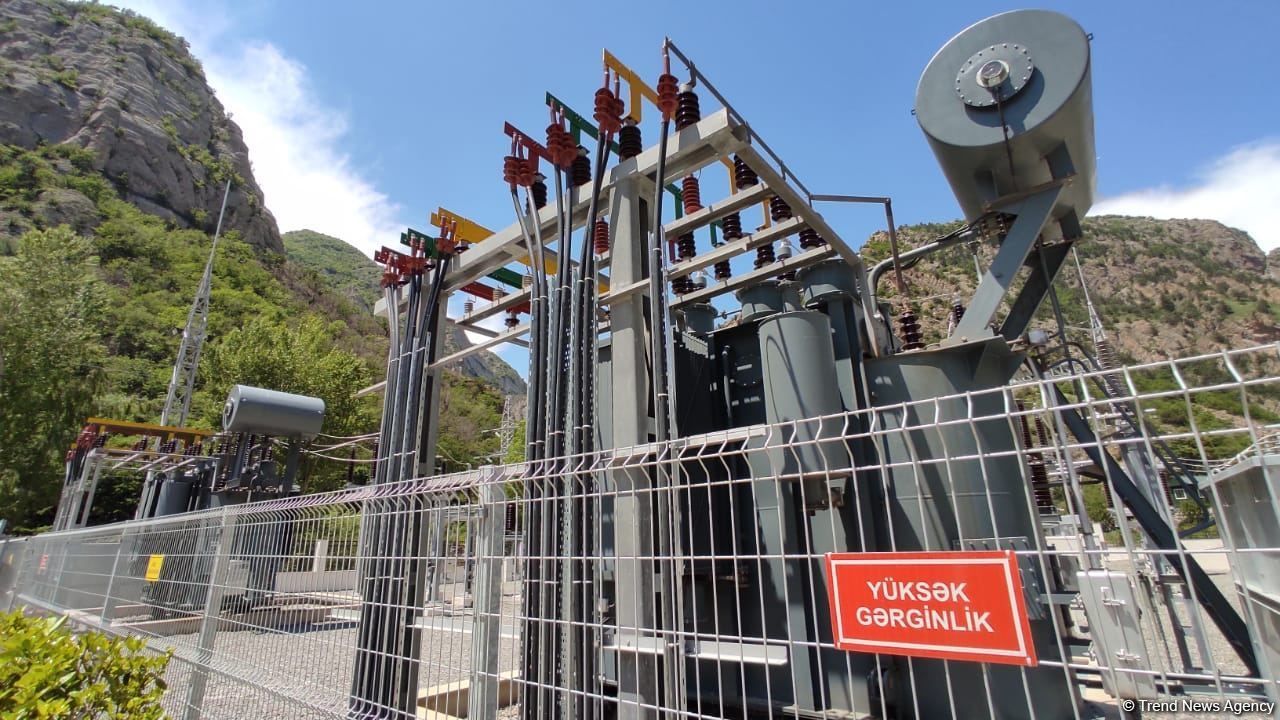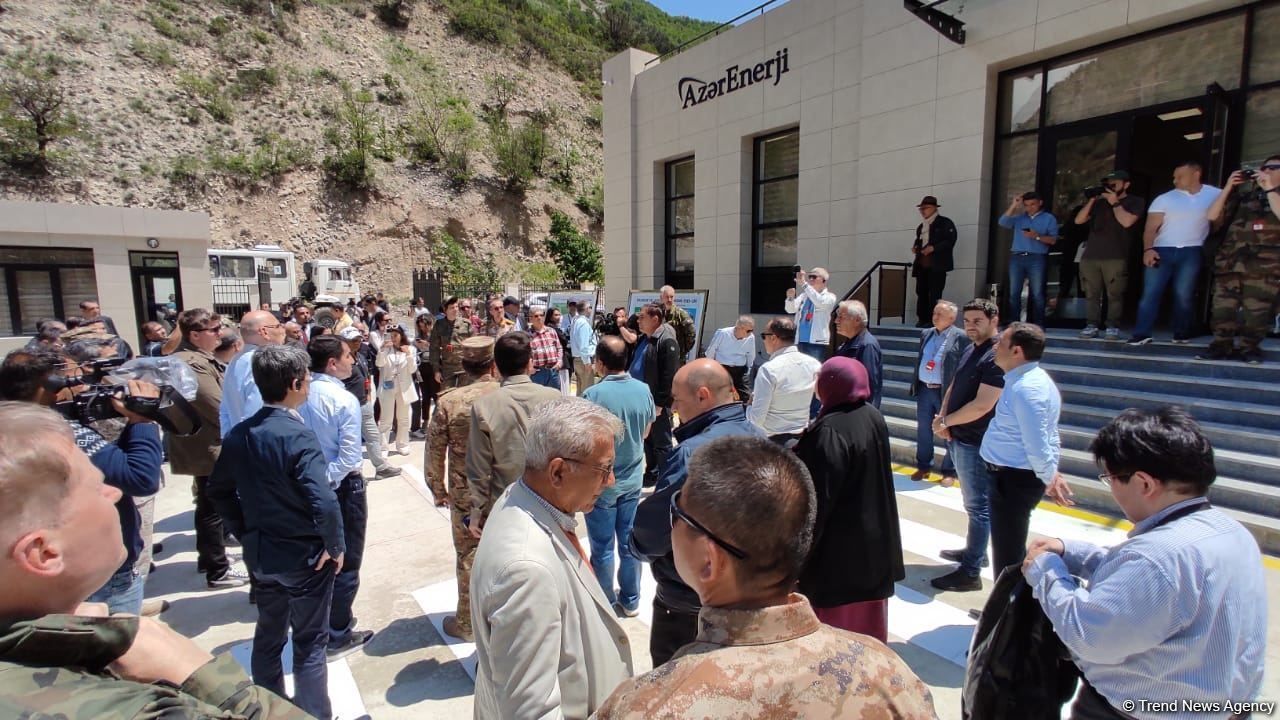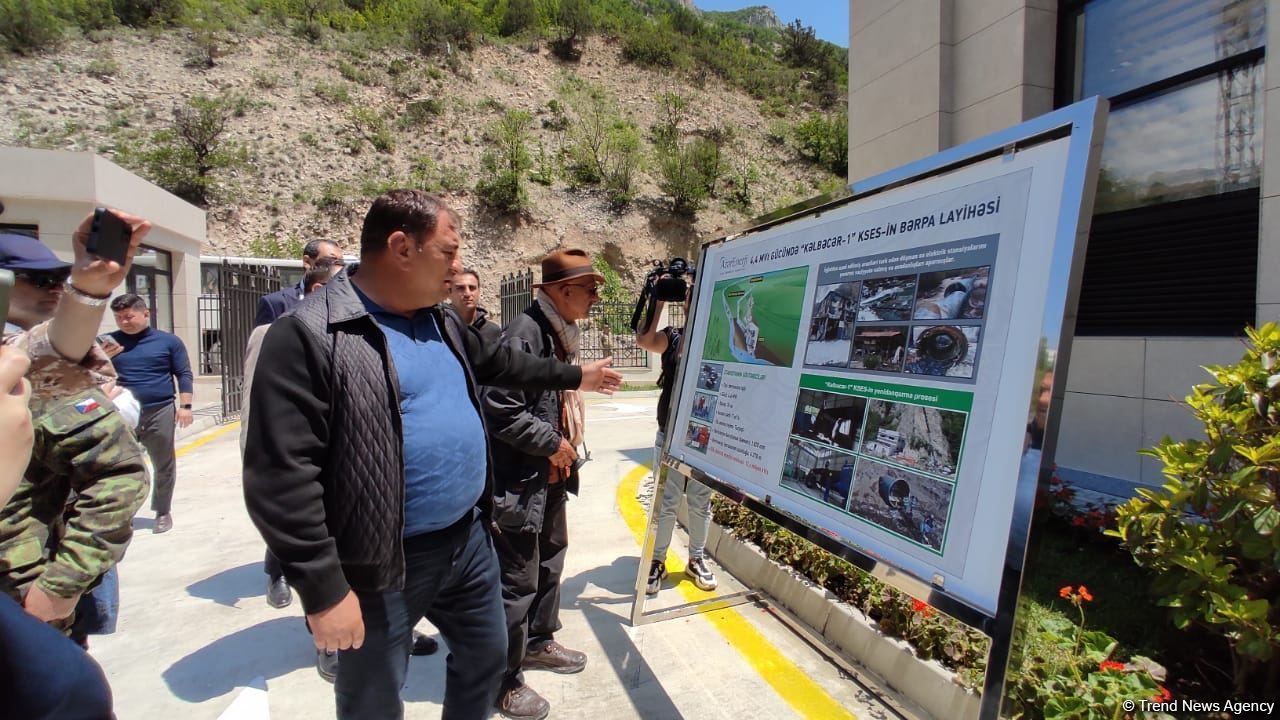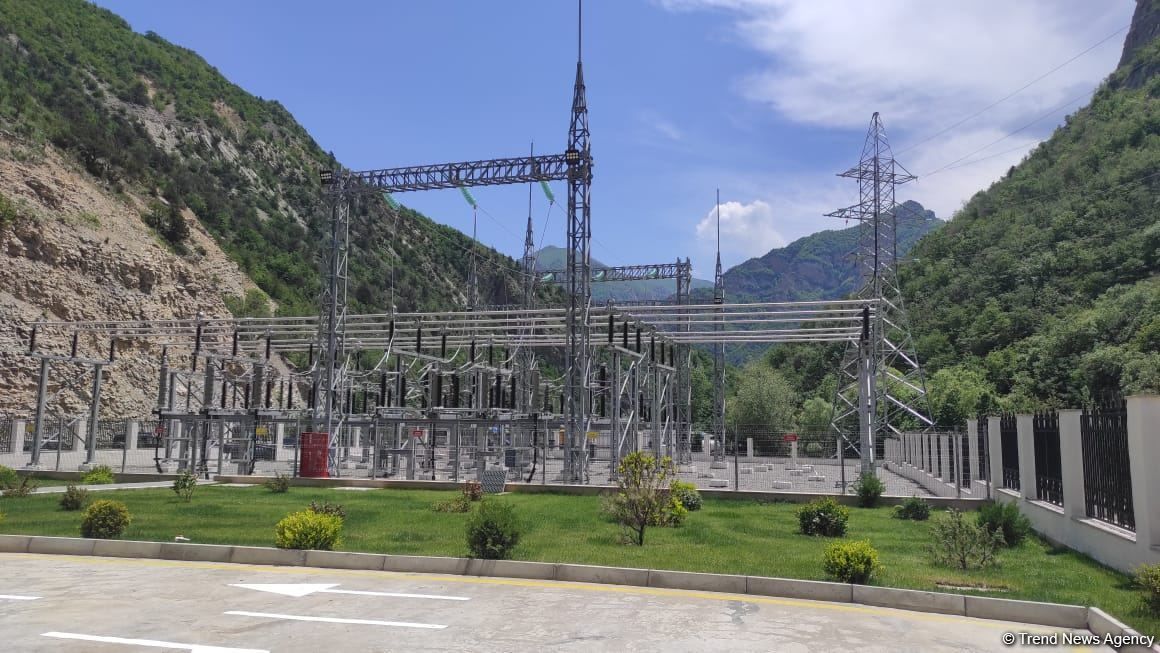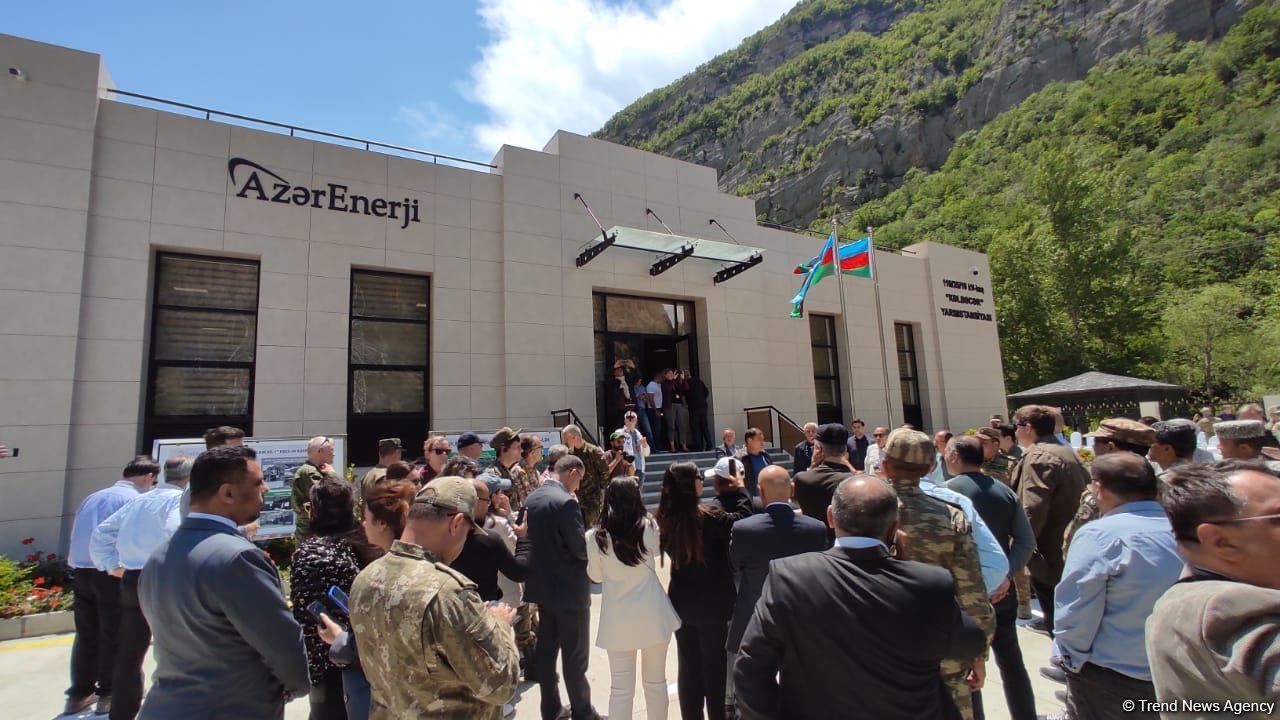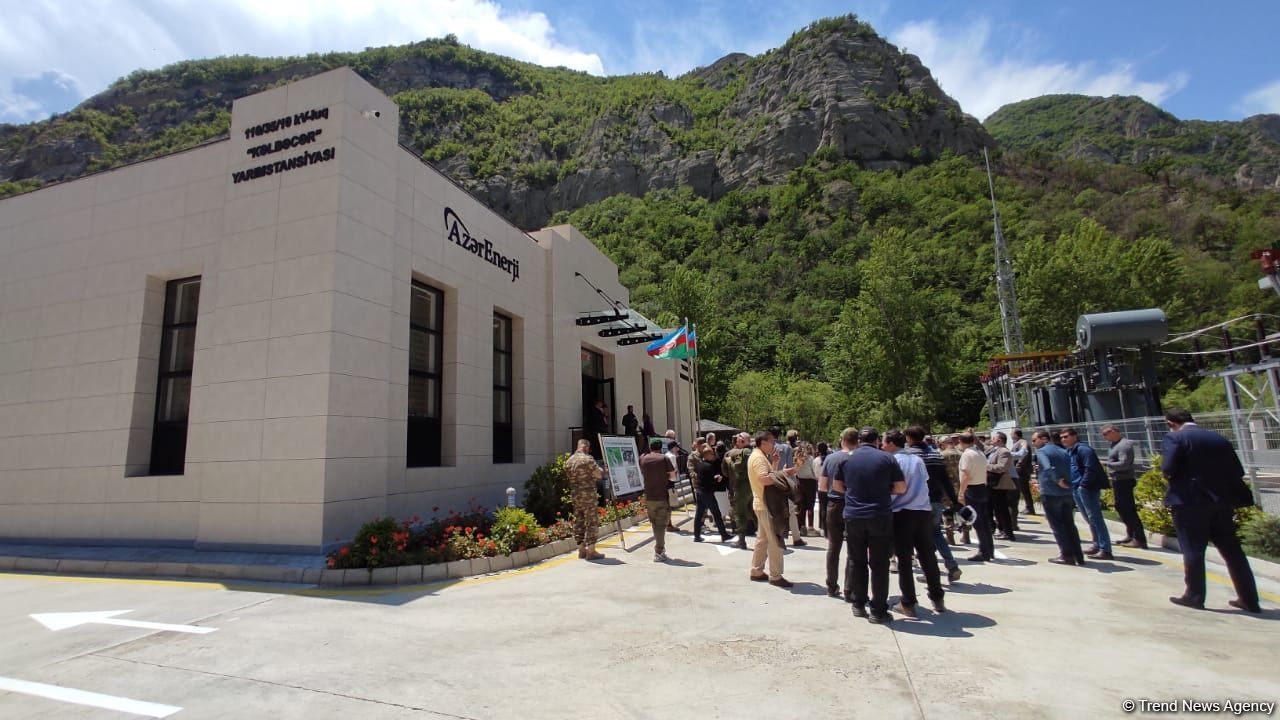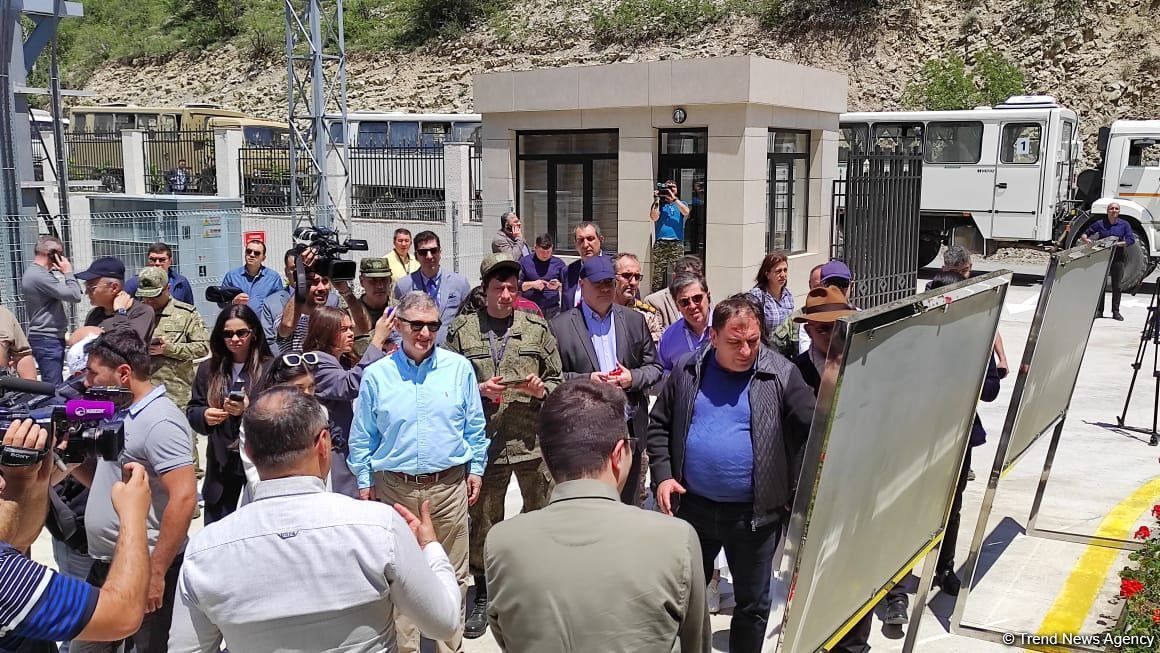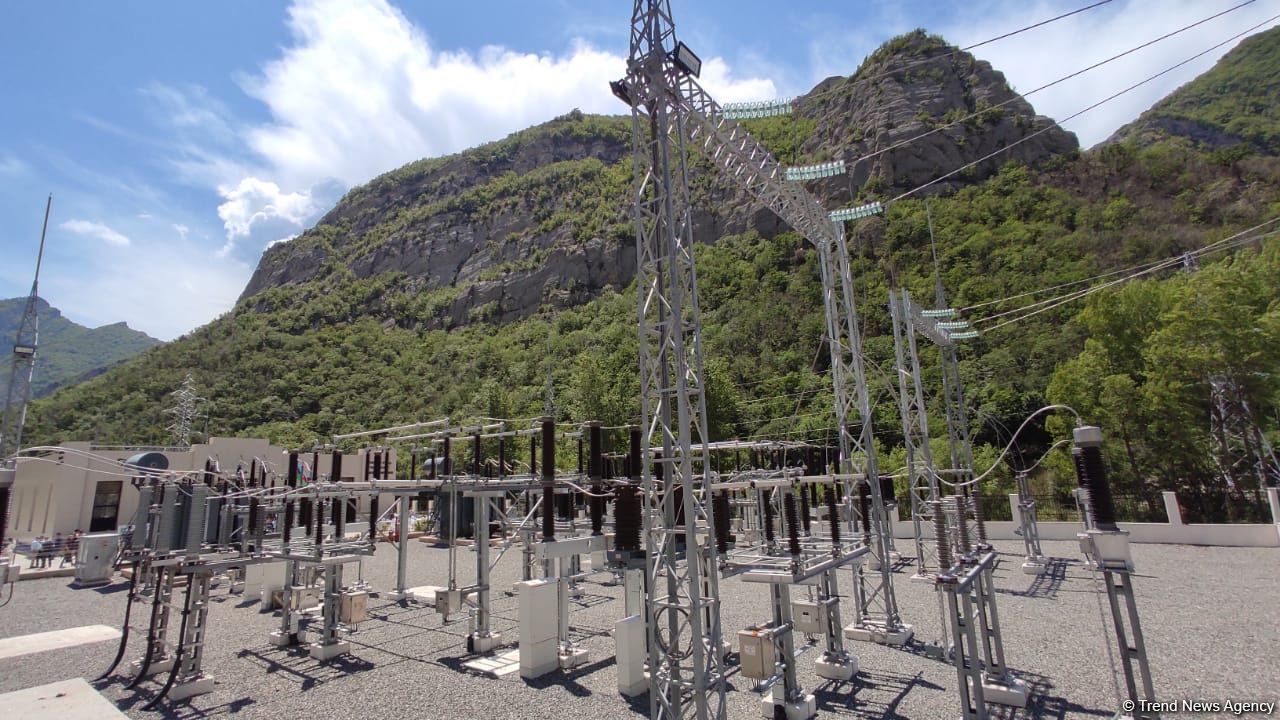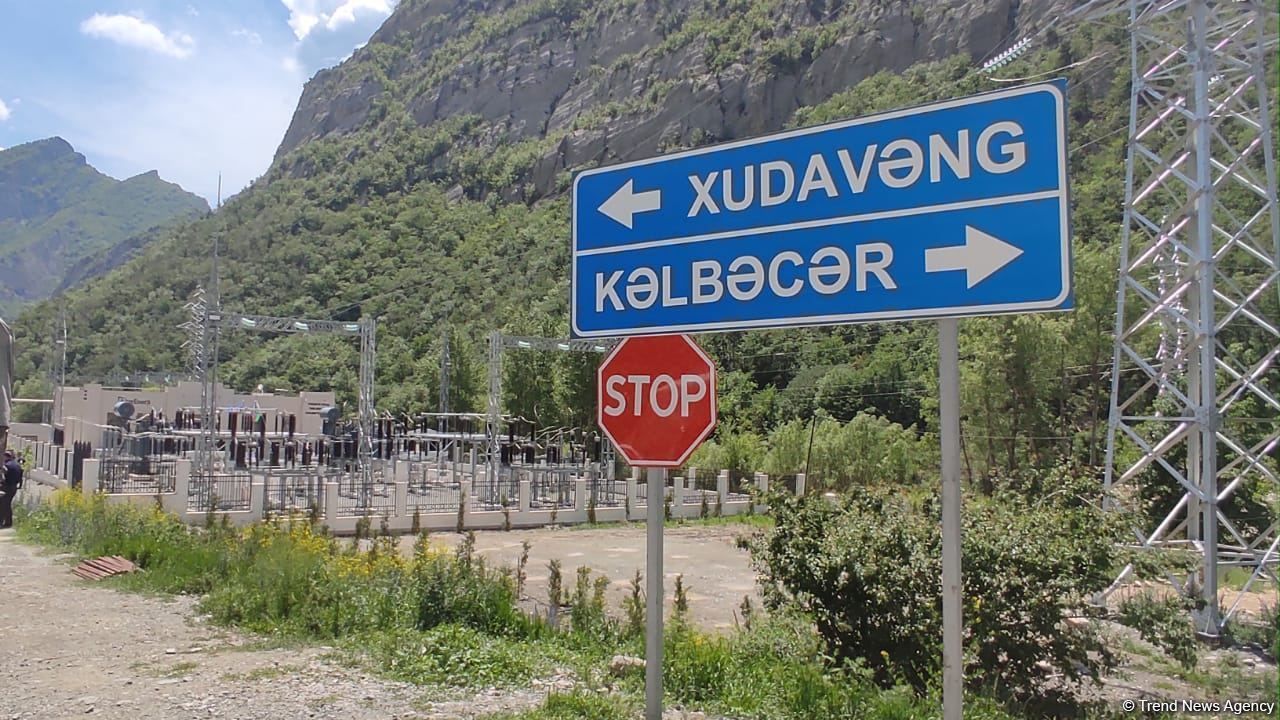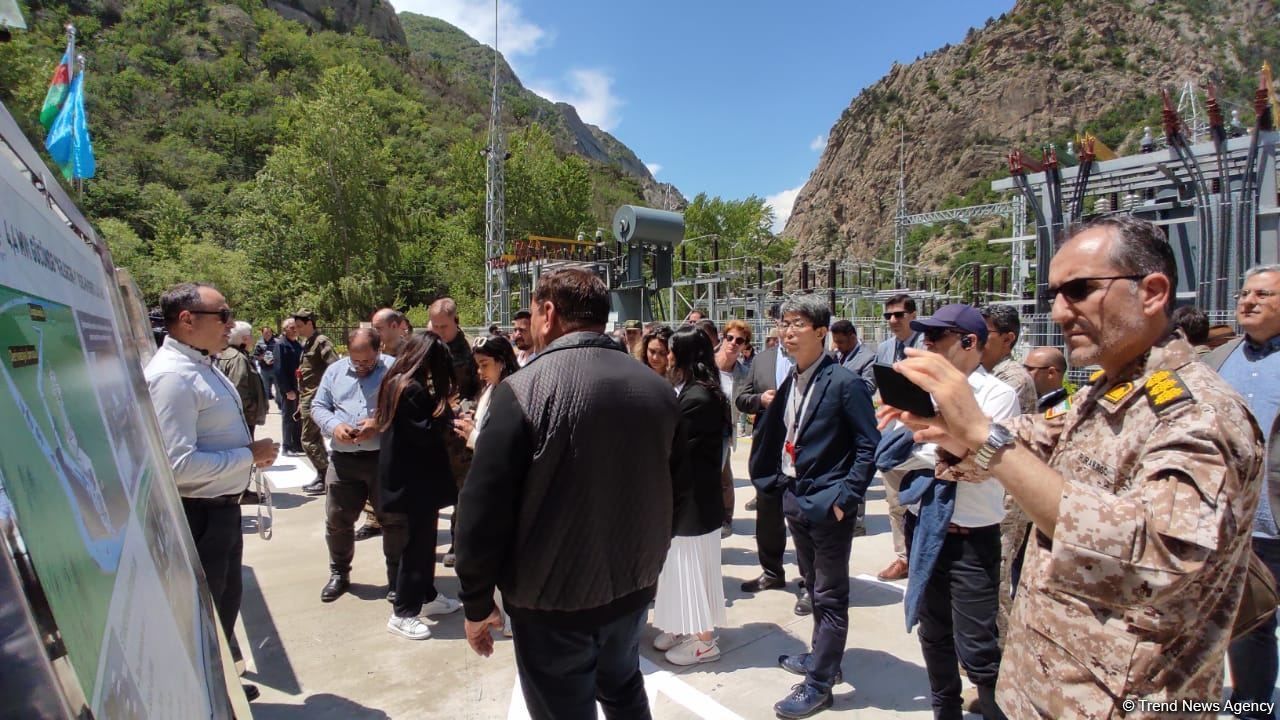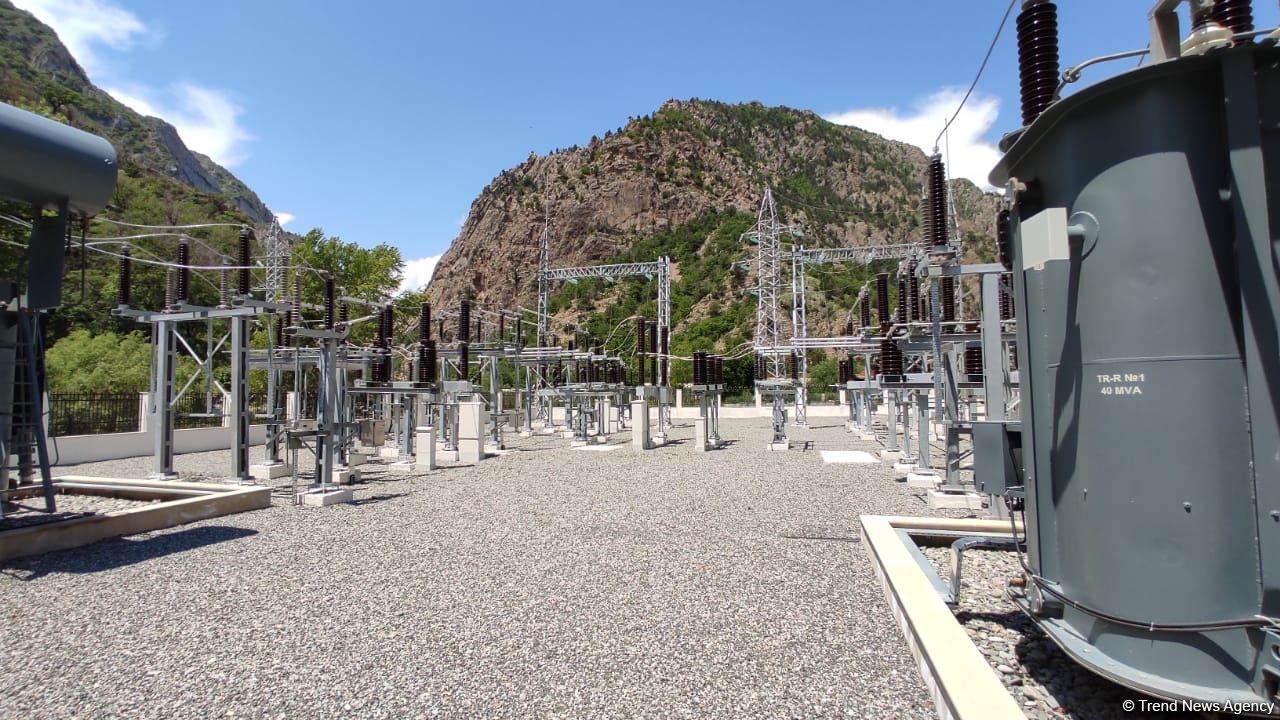Foreign diplomats in Azerbaijan traveling to de-occupied Kalbajar to see aftermath of Armenian occupation [PHOTO]
![Foreign diplomats in Azerbaijan traveling to de-occupied Kalbajar to see aftermath of Armenian occupation [PHOTO]](https://www.azernews.az/media/2022/05/31/trend_kelceber_sefer_310522_02_1.jpg)
A visit of representatives of the diplomatic corps to Azerbaijan’s liberated Kalbajar region has begun, Azernews reports.
Over 80 diplomats and military attaches from more than 50 countries and 10 international organizations are taking part in the trip.
During the trip, the diplomats got familiarized with the work on the сonstruction of a tunnel through the Murovdagh mountain range.
The visitors were informed about the process of construction of the tunnel, as well as the Toghanali-Kalbajar-Istisu highway. Besides, they were informed that the construction of the highway is planned to be completed in 2024-2025, and after its commissioning, the travel time will take no more than an hour.
Later, the guests were familiarized with the work on the restoration of hydropower plants. The visitors were informed about the beginning of the restoration of two hydropower plants, which were completely destroyed during the Armenian occupation, in Kalbajar and Lachin regions and viewed a hydropower plant in Kalbajar.
The purpose of the visit is to familiarize the foreign diplomats with the aftermath of the destructions caused by the Armenian occupation and with the restoration process in the liberated territories.
This is the ninth visit of the diplomatic corps to the liberated territories.
Azerbaijan regularly organizes visits of international delegations, officials, envoys, journalists, and rank and file citizens to liberated lands to familiarize them with the situation on the ground.
On October 15, President Ilham Aliyev said in a CIS session that thousands of politicians, diplomats, and journalists from many countries visited the liberated territories in less than one year.
Currently, the work is underway to restore Azerbaijan's liberated lands. Azerbaijan will rebuild its recently liberated areas in four stages. The initial stage includes the solution of the issues of governance and security, and infrastructure, while the subsequent stages include the solution of the issues of social services activities, reconstruction, and development of the economy.
In 2021, Azerbaijan allocated $1.5 billion to reconstruct liberated territories, followed by AZN2.2 billion ($1.2 billion) in 2022. These funds will be used primarily to restore infrastructure (electricity, gas, water, communications, roads, education, health, etc.) and cultural and historical monuments.
The liberation of Azerbaijani territories has created a new geopolitical and geoeconomic situation in the region, and the reintegration of these territories into the overall economy will further accelerate the economic development of Azerbaijan.
A Moscow-brokered ceasefire deal that Baku and Yerevan signed on November 10, 2020, brought an end to six weeks of fighting between Armenia and Azerbaijan. The Azerbaijani army crushed the Armenian troops and won the victory. The signed agreement obliged Armenia to withdraw its troops from the Azerbaijani lands that it has occupied since the early 1990s.
The peace agreement stipulated the return of Azerbaijan's Armenian-occupied Kalbajar, Aghdam and Lachin regions and urged Armenia to withdraw its troops from the Azerbaijani lands that it has occupied since the early 1990s. Before the signing of the deal, the Azerbaijani army had liberated around 300 villages, settlements, city centers, and historic Shusha city.
--
Follow us on Twitter @AzerNewsAz
Here we are to serve you with news right now. It does not cost much, but worth your attention.
Choose to support open, independent, quality journalism and subscribe on a monthly basis.
By subscribing to our online newspaper, you can have full digital access to all news, analysis, and much more.
You can also follow AzerNEWS on Twitter @AzerNewsAz or Facebook @AzerNewsNewspaper
Thank you!

